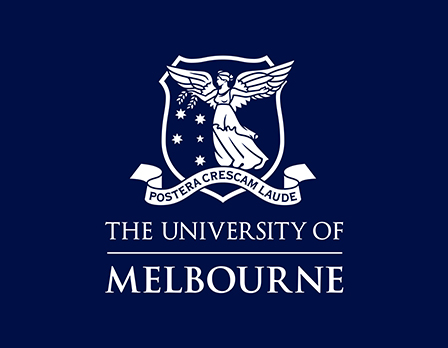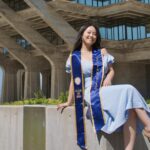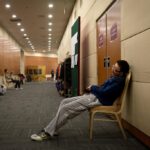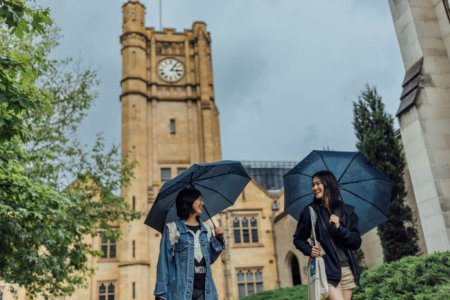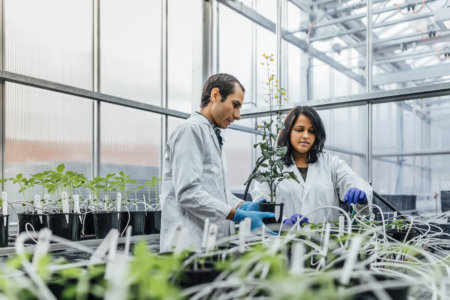The University of Melbourne is home to a cohort that proves gender is never a barrier to brilliance. At its Faculty of Engineering and Information Technology (FEIT), exceptional women are redefining what it means to be an engineer. How? Through innovation, resilience and representation. Here are just three of their stories.
Tully Mahr

Source: University of Melbourne, Faculty of Engineering & Information Technology
Growing up surrounded by aircraft, Tully Mahr (pictured above) became curious about the intricate mechanics shaping the modern world. “It was this passion in combination with my enjoyment of the cognitive processes of problem-solving that led me to pursue Mechanical Engineering,” she says.
The University of Melbourne’s global reputation for academic excellence made it an obvious choice. Its proximity to industry leaders also opened doors to internships, work placements, and networking – a perfect milieu for an aspiring aerospace engineer.
True enough, it wasn’t long until Mahr’s lifelong dream of working in NASA became a reality. “The university played a pivotal role in empowering my pursuit of this incredible internship opportunity,” she says. “Their support has been comprehensive, extending from the initial stages of the application process to my experiences overseas.”
Mahr’s internship at NASA’s Jet Propulsion Laboratory centred on the Origins and Habitability Laboratory in the Planetary Science Division. Her project, exploring compositional gradients in hydrothermal chimney systems, not only demonstrated her engineering prowess but showcased the interdisciplinary nature of her work, bridging the gaps between engineering and astrobiology.
The fusion presented both challenges and opportunities. Adding an engineering perspective into a traditionally scientific domain is no easy feat, but this student knows that by doing so, she would be pioneering a new frontier where boundaries blur. Post-graduation, Mahr envisions a future that extends beyond engineering. Through a PhD in engineering, she hopes to explore the integration of Indigenous knowledge into engineering practices.

Aswini Abeysinghe plans to use her Master of Biomedical Engineering degree to contribute to the fields of personalised medicine and assistive devices. Source: LinkedIn
Aswini Abeysinghe
Aswini Abeysinghe’s decision to pursue a Master of Biomedical Engineering stemmed from her dream of helping people in a patient-centred context. When she encountered a student working on a bionic eye during a University of Melbourne Open Day, she was convinced she had found the place to earn her advanced degree. “It was life-changing for so many people,” she says.
Inspired, she longed to make a similar impact throughout her studies. The project she’s working on now was born from a real-world need identified by her supervisor. It aims to create a personalised video game controller for a child with cerebral palsy. The overall goal is to overcome the limitations of existing solutions, prioritising user-friendly functionality, programmability for personalised controls, and precision.
“My main contribution to the project included the development of a capacitive sensor,” Abeysinghe explains. “It was crucial to identify the design requirements of our device, so we had an initial meeting with the father of the child to learn more about the child, his specific condition and needs. This prompted the creation of several initial prototypes for us to try on him and see which worked best. The final prototype was not only effective, user friendly and safety conscious but it was created to be engaging for young children.”
So far, the project has been just as fulfilling as it is mind-broadening, introducing Abeysinghe to programming languages like Python and C++. Online resources and mini intro courses, combined with the guidance of a supportive supervisor, facilitated her learning process.
After graduating, Abeysinghe aspires to continue using these skills while specialising in bioinstrumentation or medical robotics at a patient-focused company. “This project definitely enlightened me to the fields of personalised medicine and assistive devices,” she says.

Master of Mechatronics Engineering graduate Dion Kouskouris is now an associate software engineer at Telstra, Australia’s largest telecoms firm. Source: University of Melbourne
Dion Kouskouris
At a University of Melbourne Open Day, Professor Andrew Ooi, an academic staff member in the Department of Mechanical Engineering, presented on the roles engineers play in society. He posed questions such as “why does travelling to Asia still take the same amount of time today as it did 10 years ago?”
Dion Kouskouris was fascinated by these questions. “I realised that such questions motivate me to want to solve problems and, given that engineering involves a lot of problem-solving, this reaffirmed my decision,” she says.
Through the Master of Mechatronics Engineering, she learned to tackle challenges in mechanical, electrical, and software domains. This prepared her for a Telstra student project focused on a 5G Internet of Things Smart Sensor platform. Telstra is Australia’s largest telecoms firm. “From our introductory discussions with our Telstra supervisors as well as interviews with employees from the business, we derived numerous customer requirements. From these customer requirements, we formed a set of system requirements. These requirements were made to be testable, so a formal verification process could be conducted on the final prototype,” she says.
To Kouskouris, her degree equipped her with the tools to enhance customer experiences — the kind that landed her a full-time role at Telstra. “I found the transition from academia to industry to be rewarding largely due to the ‘Melbourne Model’ that the University of Melbourne offers,” she says.
“Here, lessons helped me develop a deep understanding of a broad range of disciplines whilst working with a diverse range of people from different specialities. Internships provided me with real-world experience and an opportunity to reflect on my skills, development and career pathway. Finally, my semester-long exchange to the UK broadened my academic perspective and helped me to develop cross-cultural competencies.”
Looking ahead, Kouskouris envisions contributing to building a greener, more connected world. She aspires to lead as a CEO, connecting people with technology and inspiring positive change. “With the knowledge, skills and courage I gained throughout my time at FEIT, I am now on a career path where I can achieve these goals,” she says.
Follow The University of Melbourne on Facebook, Instagram, X, and LinkedIn






